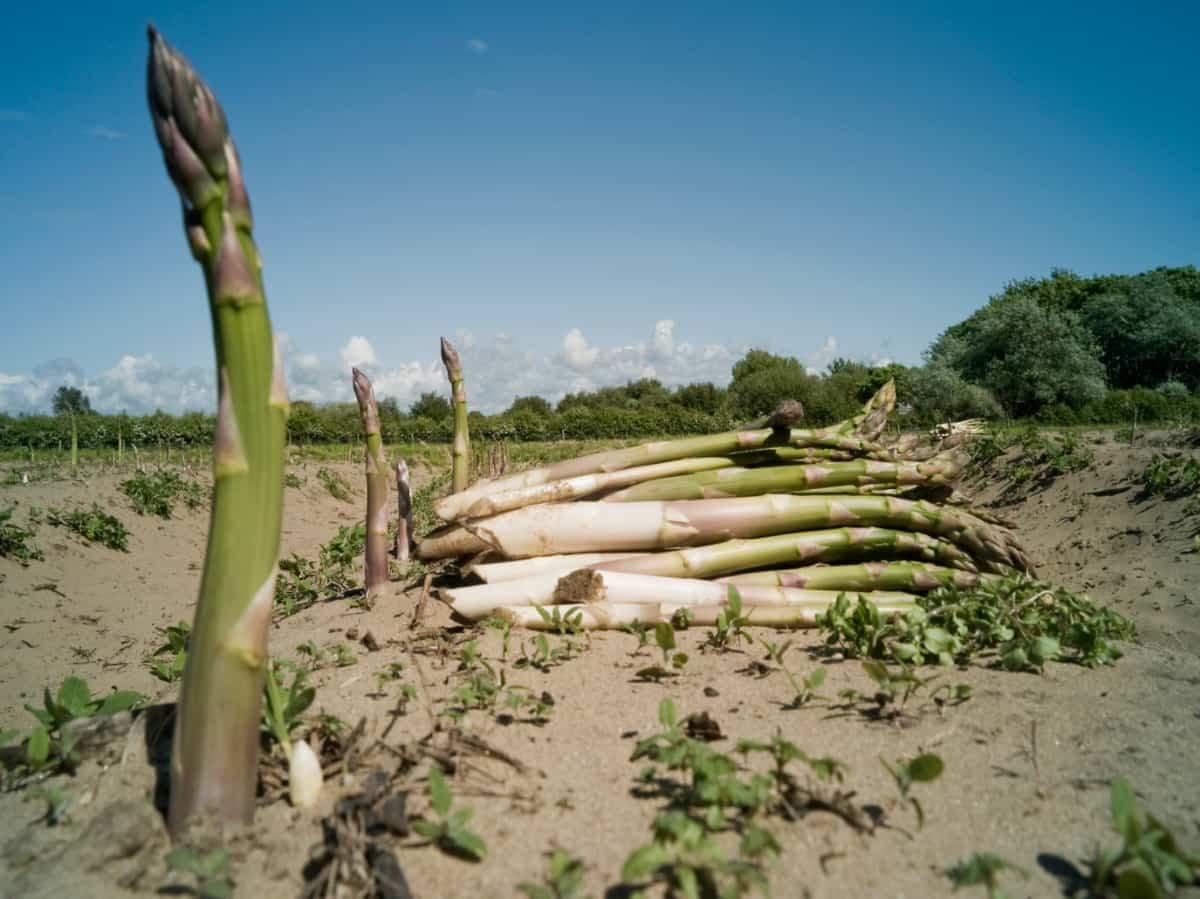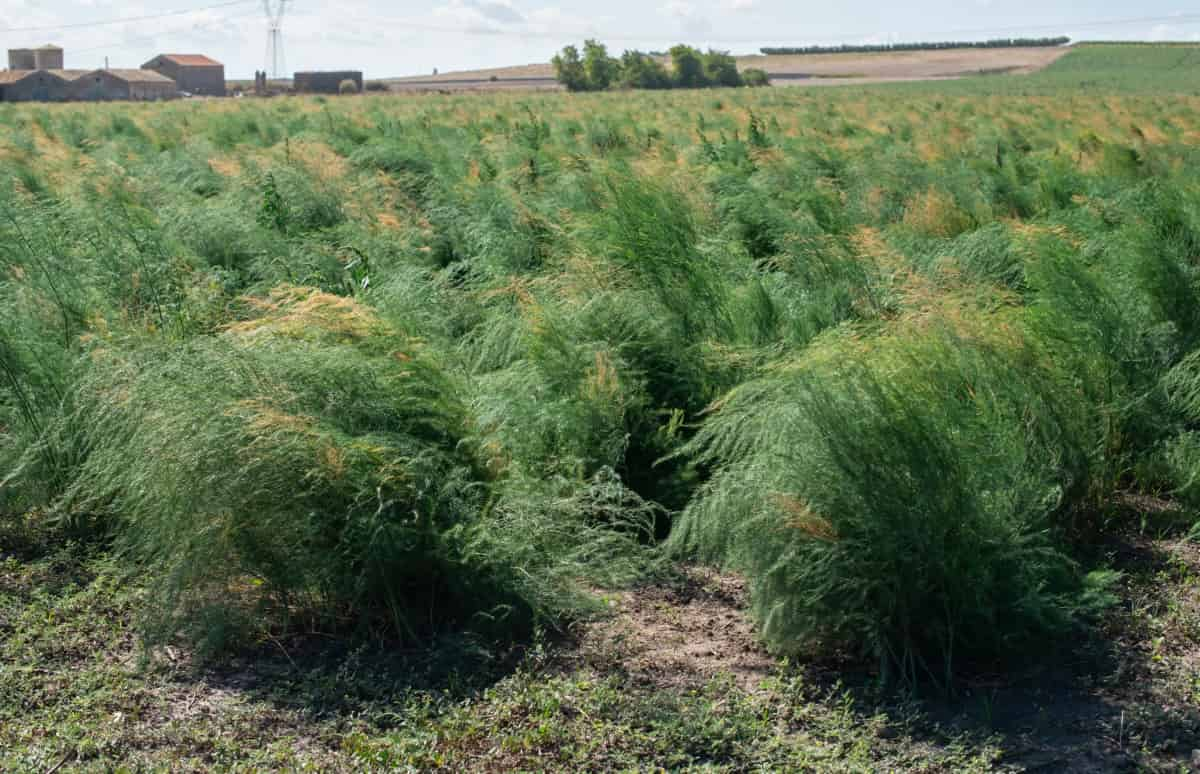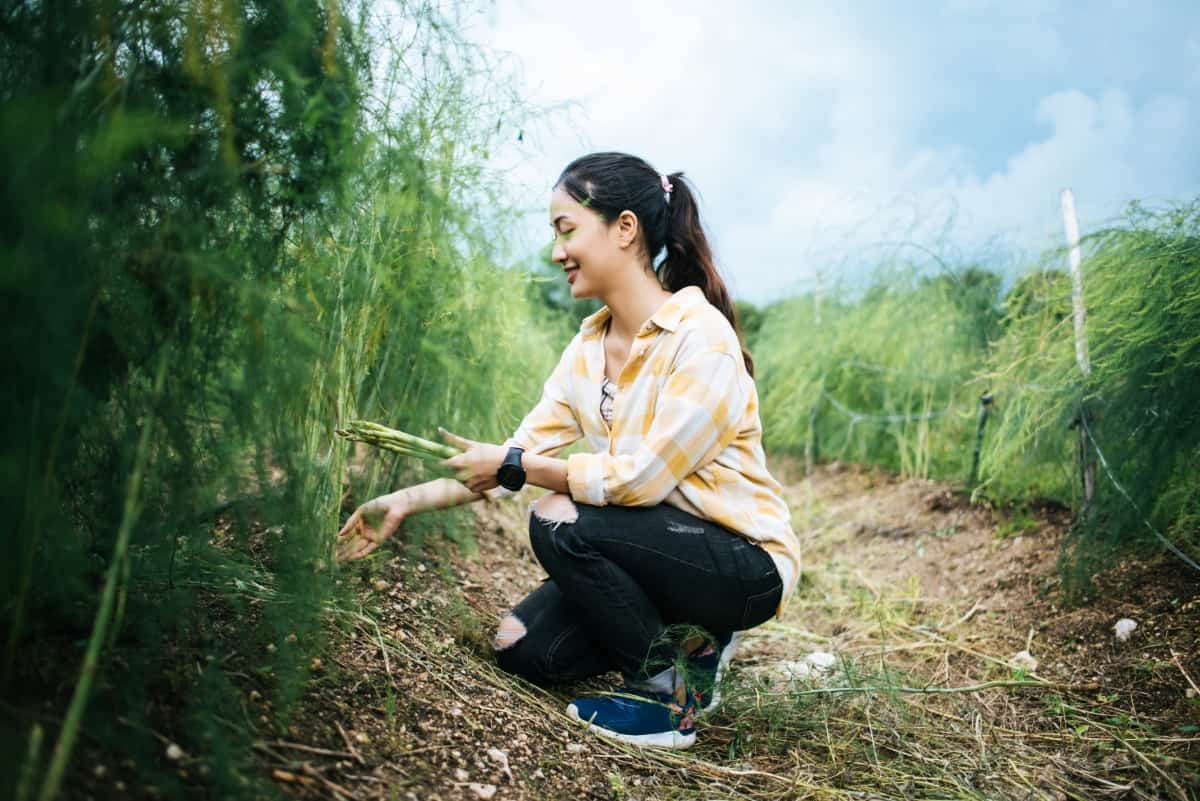Asparagus farming, though rewarding, can be challenging, especially considering factors like the asparagus growing season, the choice between growing asparagus from seed or using asparagus crowns, and the specifics of growing asparagus in raised beds or containers. Asparagus seeds are a popular choice for many, but understanding asparagus growing conditions is crucial.

Techniques like how to grow asparagus from cuttings or how to grow asparagus in a container also play a significant role in the success of the crop. With these considerations in mind, let’s delve into common mistakes to avoid.
Mistakes to Avoid in Asparagus Farming
Improper Site Selection
Choosing the wrong site for asparagus can significantly impact its growth. Asparagus thrives in well-drained, sunny locations, but often, farmers overlook this, leading to poor growth and yield. A good spot should get lots of sunlight because asparagus thrives in full sun. It’s also important to consider the length of the asparagus growing season in your area, as the plant needs a period of dormancy to thrive. Selecting a site that doesn’t cater to these needs can lead to a disappointing harvest.
Inadequate Soil Preparation
Soil preparation is critical for asparagus. This crop prefers rich, well-drained soil with a neutral pH. Many farmers make the mistake of planting in poorly prepared soil, which affects the plants’ ability to absorb nutrients and water. It’s essential to enrich the soil with organic matter and ensure proper drainage, especially when growing asparagus in raised beds or containers. Additionally, since asparagus is a perennial plant, preparing the soil well at the outset can lead to several years of productive growth.
Incorrect Planting Depth
Getting the planting depth right is crucial for asparagus. Whether you’re planting asparagus crowns or starting from seeds, the depth at which they are planted can greatly influence their growth. A common mistake is planting them too shallow or too deep, which can either expose the crowns to harsh weather conditions or hinder their growth. The general guideline is to plant crowns about 6-8 inches deep and seeds slightly shallower. This allows for adequate root development and healthy spear production.
Overcrowding of Asparagus Plants
Overcrowding is a common issue in asparagus farming. Asparagus plants need space to grow and flourish. If you plant them too close, they’ll fight for food, water, and sunlight, making them weaker and producing less. It’s important to give each plant enough room, typically about 12-18 inches apart, to ensure they have adequate resources to grow. This is especially important when growing asparagus in raised beds or containers, where space can be limited.
In case you missed it: How to Maximize Yields in Asparagus Farming: Techniques and Strategies

Inadequate Weed Control
Weeds compete with asparagus for nutrients and water, and controlling them is essential for a healthy crop. Many farmers underestimate the importance of regular weeding, which can lead to a decline in asparagus health and productivity. Using mulch can help suppress weed growth and retain soil moisture, benefiting the asparagus. Additionally, careful cultivation around the plants can keep the weed population in check without damaging the asparagus roots.
Poor Pest and Disease Management
Asparagus is susceptible to various pests and diseases, and failing to manage these effectively can lead to significant crop loss. Common issues include asparagus beetles, fusarium wilt, and rust. Regular monitoring of the crop, using appropriate pest control methods, and practicing crop rotation can help mitigate these risks. It’s also important to maintain healthy plants through proper watering and fertilization, as stressed plants are more susceptible to diseases and pest infestations.
Inadequate Watering Practices
Inadequate watering practices can greatly hinder asparagus growth. Asparagus requires consistent moisture, especially during the growing season, but overwatering or underwatering can be detrimental. Some farmers don’t change how they water their asparagus according to the weather, soil, or growth stage. Too much water can harm the roots, and too little can stress the plants and hurt their quality and yield.
In case you missed it: Caring for Young Asparagus Plants: Watering, Fertilizing, and Mulching

It’s important to water wisely, keeping the soil moist but not too wet. This is particularly important when growing asparagus in containers, as the soil in containers tends to dry out faster than in-ground beds. Regular monitoring of soil moisture and adjusting the watering accordingly can significantly improve the health and productivity of the asparagus plants.
Improper Harvesting Techniques
Improper harvesting techniques can affect the yield and longevity of asparagus plants. Harvesting asparagus requires careful timing and technique. A common mistake is either harvesting too early or too late in the season, or cutting the spears too close to or too far from the crown. Harvesting too early can weaken the plants, while harvesting too late can result in tough, woody spears.
The ideal harvesting technique involves cutting the spears at about 5-7 inches above the ground when they are just the right size and tenderness. Using a sharp knife or asparagus cutter can ensure a clean cut without damaging the crown. Additionally, in the first year of growth, it’s advisable to limit or avoid harvesting to allow the plants to establish themselves. Proper harvesting techniques ensure that the asparagus plants remain productive for many years.
Neglecting Fertilization Needs
Neglecting the fertilization needs of asparagus can significantly impact its growth and productivity. Asparagus plants are heavy feeders and require a balanced supply of nutrients throughout their growing season. A common mistake is either under-fertilizing or over-fertilizing the plants. Under-fertilizing leads to nutrient deficiencies, poor spear quality, and reduced yields, while over-fertilizing can cause excessive foliage growth at the expense of the spears and potentially harm the plants with excess chemicals.
It’s important to use a balanced fertilizer, ideally one that’s high in phosphorus and potassium, to encourage healthy root and spear development. Fertilizing should be done at the start of the growing season and again after the harvest season to replenish nutrients. Regular soil tests can also help in determining the specific fertilization needs based on the soil conditions.
Lack of Proper Crop Rotation
Lack of proper crop rotation is a critical error in asparagus farming. Asparagus is a perennial crop, and without proper rotation, the soil can become depleted of nutrients and more susceptible to pests and diseases. Many farmers make the mistake of planting asparagus in the same spot year after year, which can lead to a build-up of soil-borne diseases and pests, such as fusarium wilt and asparagus beetles.
In case you missed it: How and When to Fertilize Asparagus Plants: Requirements and Recommendation

Crop rotation means switching between growing asparagus and other plants over a few years. This keeps the soil healthy and lowers the chances of pests and diseases. If you plant things like legumes in between, it can make the soil better by adding nitrogen. Implementing a well-planned crop rotation schedule is essential for sustaining the health and productivity of the asparagus beds over the long term.
Conclusion
The success of asparagus farming hinges on the meticulous management of various factors from soil preparation to crop rotation. By diligently addressing these crucial aspects, farmers can significantly enhance the health and productivity of their asparagus crops, reaping the rewards of their careful cultivation.
- Feed Your Flock for Less: Top 10 Tips to Save on Chicken Feed
- Ultimate Guide to Ossabaw Island Hog: Breeding, Raising, Diet, and Care
- Hatching Answers: The Top 10 Reasons Your Chickens Aren’t Laying Eggs
- Eggs and Economics: Breaking Down the Cost of Raising Backyard Chickens
- Defend Your Greens: Proven Methods to Keep Iguanas Out of Your Garden
- Ultimate Guide to Cinnamon Queen Chicken: A Comprehensive Guide for Beginners
- Ultimate Guide to California Tan Chicken: Breeding, Raising, Diet, Egg-Production and Care
- Ultimate Guide to Marsh Daisy Chicken: Breeding, Raising, Diet, and Care
- 10 Types of Chicken Farming Businesses You Can Start for Profits